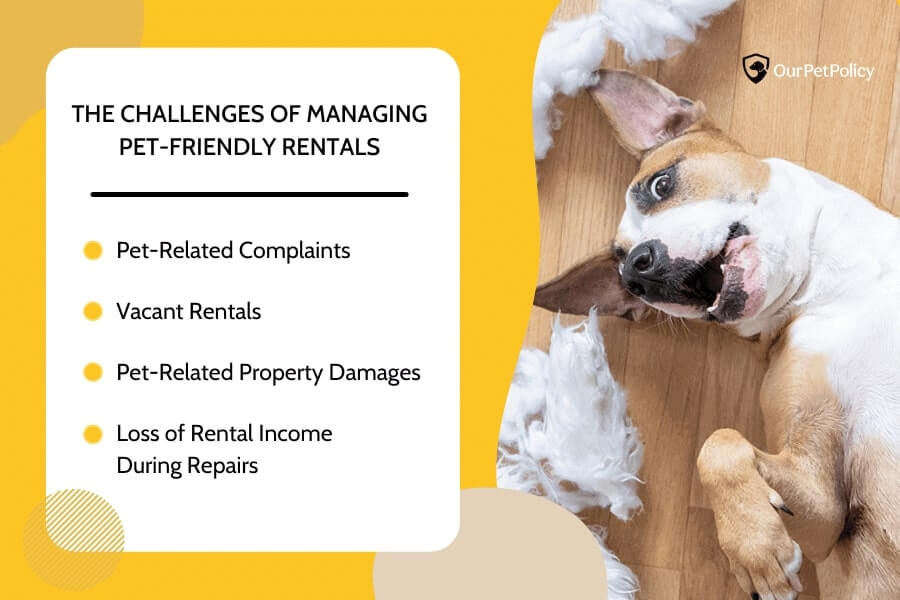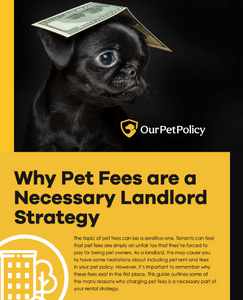Pet fees are a sensitive subject among both tenants and landlords. Many renters feel that these fees are an unfair tax that they’re forced to pay for having furry family members. As a landlord, this may cause you to hesitate to include pet rent and fees in your pet policy.
Despite the frustrations and hesitations, there’s no ignoring the importance of charging pet fees. The truth is, the cost of allowing pets in your rentals goes far beyond the occasional carpet replacement.
In today’s article, we’ll be covering the different pet-related issues that these fees can cover.
The Challenges of Managing Pet-Friendly Rentals
By encouraging pet owners to apply for your rentals, you expand your tenant pool to the 75% of renters that own pets. While this can definitely help you reduce your vacancies and increase your tenant rent, it does create some new challenges.

Pet-Related Complaints
Allowing pets into your rentals can increase the number of complaints that you receive from your tenants.
Depending on the types of pets you allow, you can expect to get one or several of the following complaints:
• Excessive meowing, barking, crying or howling,
• Loud nails running around on the floor above,
• Messes in hallways, common areas, or grounds,
• Allergies
Vacant Rentals
Tenants do have the right to break their lease without penalty if their landlord cannot provide an acceptable solution to repeated pet complaints. If the situation persists, this can result in the loss of several tenants, including a possible eviction of the pet owner. These sudden vacancies can lead to a loss in rental income.
Pet-Related Property Damages
It’s much easier to recoup the cost of any damages that your tenant's pets may cause by receiving pet deposits upfront.
Common damage includes:
• Torn up blinds
• Scratched carpets and floors
• Stained walls and carpets
• Dug up carpets or landscaping
• Chewed moldings and walls
Carpets are among the most costly repairs for landlords. The average cost to replace just 500sq. ft. of carpet is $2400, which can be seen as a $50 monthly loss on the unit if the landlord must replace it every five years instead of 10.

Loss of Rental Income During Repairs
Closing a unit for repairs is one of the most costly situations a landlord must endure. Since repairs can take upwards of two weeks or more, new tenants are unable to move in, resulting in the loss of rent in addition to the cost of the repairs.
On a $1,200 monthly rent, those two weeks result in a $600 loss, and that doesn't include the time it may take to assess the damages and get contractors on site.
Get the Complete Guide
If you’d like to know more about how pet fees can help you protect your profit and property, download our complete guide:
Why Pet Fees are a Necessary Landlord Strategy
Features:
• Pet waste management issues and strategies.
• The benefits of Pet DNA testing.
• How to accommodate tenants with allergies.
• The costly threat of Emotional Support animals.
• And more!
**Get the complete guide here

